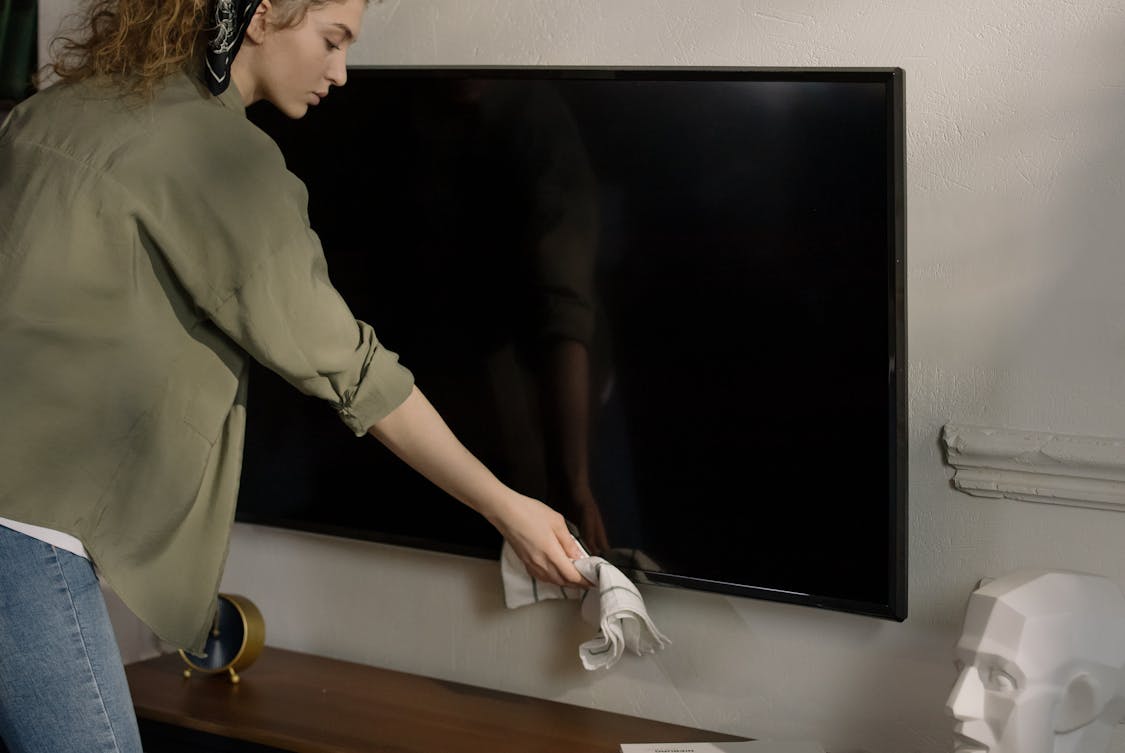Television screens, much like our favorite movies, can sometimes experience unexpected hiccups. One common issue that many viewers face is the appearance of white spots on their screens.
These spots can be frustrating, distracting from the viewing experience. Understanding why they occur and how to address them can help restore your TV to its pristine condition.
Let’s explore the various causes behind those pesky white dots and the steps you can take to remedy the situation.
Understanding the Problem
Understanding what white spots on Samsung TV could mean is crucial, as they can indicate anything from a malfunctioning pixel to issues with the backlighting system, all of which can impact your viewing experience.
The first step to resolving the problem is identifying its source. This guide breaks down the most common culprits, offering insights into each one.
Pixel Malfunction
One major reason for white spots is a malfunctioning pixel. Pixels are the tiny dots that make up your TV screen, and each one plays a vital role in delivering quality images.
When a pixel fails, it can become permanently stuck in the “on” position, displaying white instead of the assigned color. This issue is often referred to as a “stuck pixel.”
Identifying Stuck Pixels
To pinpoint a stuck pixel, display a solid color screen in red, green, and blue. If a dot remains visible across all colors, you may be dealing with a stuck pixel.
These pixels can often be revived with techniques like gently massaging the area or utilizing software that cycles through colors to encourage the pixel to reset.
Dead Pixels
Distinct from stuck pixels, dead pixels remain black and do not light up at all. These are typically caused by manufacturing defects or damage to the screen.
Unfortunately, dead pixels are permanent and cannot be fixed. The best course of action, if a significant number of dead pixels are present, is to contact the manufacturer for repair options or replacements.
Pressure Points
Sometimes, white spots can appear due to pressure points on the screen. This can happen if something heavy is placed on the television or if the screen has been pressed against a hard surface.
The damage might not be visible initially, but over time, it can lead to discoloration or spots.
Fixing Pressure Damage
Inspect the screen closely to determine if pressure-induced damage is the cause. If this is the case, the best solution is prevention; avoid placing objects on the screen or pressing against it. In cases of severe pressure damage, a screen replacement may be necessary.
Dust and Dirt Accumulation

It’s not unusual for dust and dirt to accumulate on your TV screen, especially if it’s in a high-traffic area.
These particles can create the illusion of white spots when viewing content. Regular cleaning can often clear up this issue.
Cleaning Techniques
To clean the screen, use a microfiber cloth slightly dampened with water or a solution recommended by the manufacturer.
Avoid using paper towels or harsh chemicals, as these can scratch or damage the screen. Gently wipe the screen in circular motions to remove grime without risking further damage.
Internal Reflections
Reflections from nearby light sources can sometimes mimic white spots on your TV screen. If your viewing area has bright lights or windows, these reflections can disrupt the image.
The problem may not be a defect in your television but rather an optical illusion created by environmental factors.
Adjusting Lighting Conditions
To combat reflection issues, try repositioning your TV or adjusting the lighting in the room.
Dimming overhead lights or using curtains can help reduce glare and improve your viewing experience. This simple change can sometimes eliminate the appearance of unwanted spots.
Screen Damage
If your TV has endured physical trauma—such as being dropped or hit—internal screen damage could be the issue. This type of damage can lead to various visual artifacts, including white spots.
Assessing Screen Integrity
Examine the screen for cracks or chips. If you discover physical damage, it’s best to consult a technician for repair options.
In some instances, the damage may not be repairable, necessitating a complete screen replacement or a new television.
Issues with Backlighting
Many modern TVs use LED backlighting to illuminate the screen. If there’s a problem with the backlight—such as uneven distribution—it can give rise to bright spots or areas of excess brightness. This issue is more common in LCD screens.
Diagnosing Backlight Problems
If you suspect backlighting issues, adjust the brightness and contrast settings on your TV. If the spots persist, it might be time for a professional evaluation.
A qualified technician can assess whether the backlight needs repair or replacement.
Age of the TV
As with any electronic device, age can play a significant role in performance. Older televisions may be more prone to issues, including the development of white spots due to wear and tear on components.
Evaluating the Lifespan
If your TV is several years old and exhibiting white spots, it might be a sign that it’s time for an upgrade.
Technological advancements in display technology mean that newer models may offer better picture quality and durability.
Warranty and Service Options
If your TV is still under warranty, it’s wise to explore your options. Manufacturers often provide repair services or replacements for display issues that are not user-induced.
Contacting Support
Reach out to customer support for your TV brand to discuss your concerns. They may offer troubleshooting advice or direct you to an authorized repair center.
Keep your purchase receipt handy, as it may be required for warranty claims.
DIY Fixes for Stuck Pixels
If a stuck pixel is the issue, some DIY methods have shown success in reviving them. The most common technique involves gently massaging the area with a soft cloth.
Others might use pixel-fixing software that rapidly cycles through colors to trigger the pixel to respond.
Software Solutions
There are several applications available online specifically designed for fixing stuck pixels. These programs work by displaying various colors and patterns for extended periods. This process can sometimes coax the pixel back to life.
Professional Repair Services
For more severe cases—like dead pixels or significant screen damage—professional help is often needed. Technicians can assess the extent of the damage and provide appropriate repairs or part replacements.
Finding a Technician
Look for reputable repair services in your area. Check online reviews and ask for recommendations from friends or family.
A seasoned technician can diagnose the problem accurately and suggest the best course of action.
Preventive Measures
Keeping your TV in good condition requires some preventive strategies. Regular maintenance can help avoid many common issues that lead to white spots.
Start with routine cleaning and ensure the TV is placed securely in a safe location.
Setup Considerations
When setting up your TV, consider factors like placement and distance from light sources. Properly securing cables and avoiding clutter around the screen can also help maintain its integrity.
By understanding the causes of white spots and steps to take, you can ensure your viewing experience remains enjoyable. Take care of your television, and it will reward you with countless hours of entertainment.


